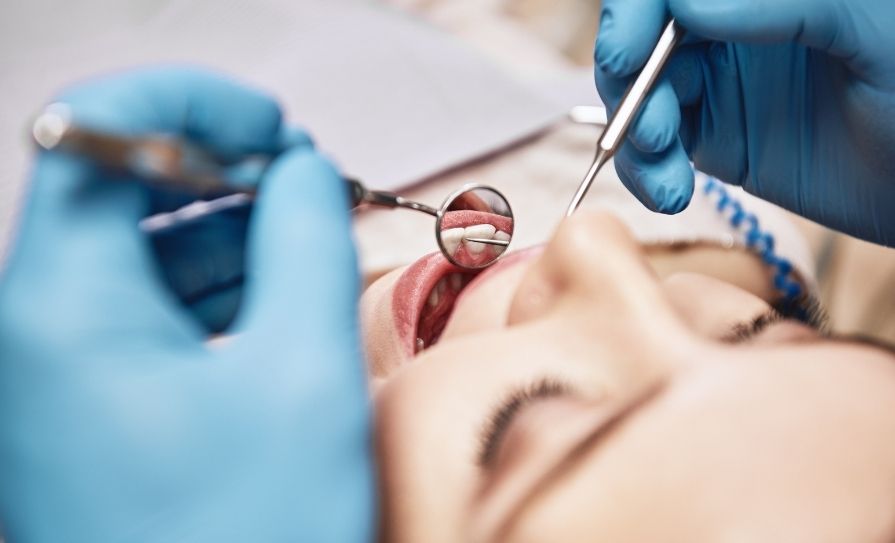Pharmacists play a crucial role in providing contraceptive advice, ensuring that women and their partners have access to reliable contraception that can help them achieve safe sexual practices and family planning
TYPES OF CONTRACEPTIVES HORMONAL CONTRACEPTIVES
Hormonal contraceptives contain synthetic hormones, such as progesterone and oestrogen, that regulate ovulation and prevent pregnancy. They come in various forms, including oral pills, patches, injections, vaginal rings, and implants. Note that ‘progestins’ is the term used to describe synthetic, laboratory-created hormones that mimic progesterone and act as it does in the body. There are several synthetic progesterone hormones, also known as progestins, that are used in various contraceptive pills, either on their own when they are known as progesterone only-contraceptives (POCs), or combined oral contraceptives (COCs), where progesterones are combined with oestrogens. Examples of progesterones used in contraceptives include: uLevonorgestrel: It is one of the most- used progestins in COCs. COC brands containing levonorgestrel include Ovranette, Ovreena, Microlite, Logynon, Violite, Mylite, and Leonore (all of which are COCs containing a combination ethinylestradiol and levonorgestrel of varying strength). The implants/ intrauterine devices Mirena, Kyleena, and Jaydess contain Levonorgestrel, while Levonorgestrel 1.5mg is used for emergency contraception. uNorethisterone, also known as norethindrone. This progestin is used in COCs as well as in some POCs (ie, Noriday). COC brand names containing norethisterone, include Ovranette and Ovreena, both of which contain norethisterone and ethinylestradiol. uDrospirenone: It is a newer progestin used in combination with oral contraceptives. It is combined with ethinylestradiol in pills such as Yasmin, Yaz, Elvina, and Elvinette, while Angeliq contains oestradiol and drospirenone. uDesogestrel: Another progestin used in COC and POCs. POCs that contain desogestrel are Cerazette and Azalia and COCs that include desogestrel and ethinylestradiol include Marviol
and Mercilon. uNorgestimate: This progestin is used in COCs. Clique contains norgestimate and ethinylestradiol.
TYPES OF HORMONAL CONTRACEPTIVES ORAL CONTRACEPTIVES
Availability in Ireland only via prescription
Oral contraceptives are available in Ireland with a prescription. Hope remains that oral contraceptives will become available over-the-counter in pharmacies in Ireland, as they are in the UK and other countries, under specific criteria relating to consultation of a pharmacist. The IPU continue to negotiate with the Department of Health and HSE and of the question when this will happen; currently, nobody knows. However, when it does, it will improve accessibility for women and take pressure off GPs, meaning a better outcome for the people that matter, the people of Ireland.
Effectiveness
Their effectiveness of oral contraceptives is over 99 per cent when used correctly. Oral contraceptives can cause several side-effects, such as headaches, mood swings, and irregular bleeding. The COC pill contains both oestrogen and progesterone, while progestogen-only contraceptive (POC), the ‘mini pill’, only contains progestogen.
Advantages of COCs over POCs
1. Higher efficacy: COCs have a lower failure rate compared to POCs. When taken correctly, COCs are around 99 per cent effective in preventing pregnancy, while POCs have a slightly higher failure rate.
2. Better cycle control: COCs provide better control over the menstrual cycle so better control at regulating irregular periods, reducing menstrual pain, and decreasing heavy menstrual bleeding. They can also be used to skip or delay periods, which may be desired during certain situations like holidays or special events.
3. Decreased risk of ovarian and endometrial cancers: COCs have been shown to reduce the risk of ovarian and endometrial cancers. POCs do not offer the same level of protection against these types of cancers.
4. Reduced risk of benign breast conditions: COCs have a protective effect against certain benign breast conditions such as fibrocystic breast disease, fibroadenoma, and benign breast tumours.
5. Reduced risk of ectopic pregnancy: COCs have been associated with a lower risk of ectopic pregnancy compared to POCs. Ectopic pregnancy occurs when a fertilised egg implants outside of the uterus, typically in the fallopian tubes.
6. Potential acne control: Some types of COCs containing certain progestins can help improve acne by reducing oil production and regulating hormones.
POCS
POCs, also known as ‘mini pills’, contain synthetic progesterone hormones and no oestrogen. They are often recommended for women who cannot take oestrogen- based contraceptives due to a medical condition or who have experienced adverse side-effects related to oestrogen.
Reasons why progesterone-only contraceptives may be preferred:
1. Safe for women who are breastfeeding: POCs are safe for nursing mothers because they do not interfere with milk production or the health of the baby.
2. Lower risk of cardiovascular health issues: Women who cannot take oestrogen-based contraceptives due
to their risk of developing blood clots, stroke, or certain types of cancer
(breast, ovarian, or endometrial) may be recommended POCs as a safer alternative, especially in older women of child- bearing age, who can be at more risk from the likes of clots.
3. Fewer side-effects: Progesterone-only contraceptives have fewer side-effects than oestrogen-based contraceptives as oestrogen can cause headaches, nausea, and weight gain. It’s important to note that progesterone-only contraceptives may not be as effective as combined oestrogen and progesterone contraceptives and may require stricter adherence to the dosage schedule to be effective, ie, progesterone- only contraceptives are more effective if taken in the same three-hour time window every 24 hours.
Reasons lower-dose contraceptives may be preferred
1. Effective contraception: Low-dose contraceptive pills contain lower amounts of oestrogen and progestin compared to traditional formulations. Despite lower hormone levels, they are still highly effective in preventing pregnancy when used correctly.
2. Reduced side-effects: Low-dose contraceptive pills are often associated with reduced side-effects compared to higher-dose formulations. They may have a lower risk of hormonal-related adverse effects such as bloating, weight gain, breast tenderness, and mood changes.
3. Safety considerations: Lowering the hormone levels in contraceptive pills can have potential benefits for certain groups of women. It is particularly relevant for women who have experienced side-effects or contraindications associated with higher-dose formulations. Women who are at a higher risk of developing blood clots or those with specific medical conditions may be better suited for low-dose options. Examples of lower does COCs include Yasmin, which contains 30mcg of ethinylestradiol and 3mg of drospirenone (progestogen), and Cilest, with 35mcg of ethinylestradiol and 250mcg of norgestimate (progestogen).
COC USE IN ACNE
Dianette contains ethinylestradiol and cyproterone acetate and is the only COC licensed for acne and is approved and licensed for the treatment of severe acne that has not responded to other treatments.
VAGINAL RING
The vaginal ring (also known as a contraceptive ring) is a flexible ring that is inserted into the vagina and releases hormones progressively for three weeks. It is over 99 per cent effective when used correctly. It is an option for women who have difficulty remembering to take an oral contraceptive daily, ie, Nuvaring (contains etonogestrel and ethinylestradiol). Inserting a vaginal ring is a straightforward process that can be done at home. First, wash hands thoroughly to maintain hygiene. Find a comfortable position, such as squatting or lying down, to make insertion easier. Pinch the ring between the thumb and index finger, then gently push it into the vagina. Aim for the upper third, like the insertion of a tampon. Once inside, the ring works by releasing hormones that prevent pregnancy. It needs to be left in place for three weeks, and then removed for one week to allow for menstruation.
PATCHES
Contraceptive patches are small adhesive patches that are stuck onto the skin, where they release hormones over a week. Parts of the body they can stick to include the abdomen, buttocks, upper outer arm, or upper torso. A new patch is placed onto the skin every week for three weeks, followed by a patch-free week for menstruation. They are over 99 per cent effective when used correctly. The side- effects of patches and oral contraceptives are similar. Evra patch (norelgestromin/ ethinyl oestradiol) is a contraceptive patch available in Ireland.
INJECTIONS
Injectable contraceptives, including the only brand available in Ireland which is medroxyprogesterone acetate (Depo- Provera), are given every three months and contain progestogen to prevent ovulation. This type of contraceptive is over 99 per cent effective when used correctly. It can reduce heavy menstrual bleeding and has long-lasting pregnancy protection. One of the more severe side-effects is loss of bone density if taken for an extended period.
IMPLANTS
Contraceptive implants contain progestogen and are implanted into the upper arm to provide long-lasting pregnancy protection. Once inserted, the implant can last for up to three years.
It is over 99 per cent effective when correctly inserted. The implant can cause hormonal side-effects such as headaches, acne, and weight gain. In Ireland, there are three contraceptive implants available: uImplanon NXT (etonogestrel implant): Active ingredient: Etonogestrel, a synthetic progestin hormone.
uKyleena (levonorgestrel-releasing intrauterine system): Active ingredient: Levonorgestrel, a synthetic progestin hormone. uJaydess levonorgestrel-releasing intrauterine delivery system 13.5mg.
CRITERIA FOR PRESCRIBER/ PATIENT WHEN DECIDING ON IMPLANON NXT VERSUS KYLEENA
When considering the choice between Implanon and Kyleena implants or if deciding on implants instead of oral contraceptives, several criteria can help guide the decision-making process, including:
1. Effectiveness: Both Implanon and Kyleena have a failure rate of less than 1 per cent, meaning both are more effective than oral contraceptive pills.
2. Duration: Implanon provides contraception for up to three years, while Kyleena can last for up to five years.
3. Hormonal composition: Implanon contains a progestin hormone (etonogestrel), while Kyleena contains
a low dose of levonorgestrel, a type of progestin. Both hormones work by preventing ovulation, thickening cervical mucus, and thinning the uterine lining. If a specific hormonal composition is preferred, this can be a deciding factor.
4. Insertion procedure: Implanon is a single rod that is inserted just beneath the skin of the upper arm,
while Kyleena is an intrauterine device (IUD) that is placed inside the uterus
by a healthcare professional. The method of insertion may influence personal preferences and comfort.
5. Side-effects: Both methods may have similar side-effects, such as irregular bleeding patterns, mood changes, and headaches.
6. Reversibility: Both Implanon and Kyleena are reversible methods of contraception. Once the implant or the IUD is removed, fertility typically returns promptly.
More about the Jaydess intrauterine delivery system 13.5mg
While I compared Implanon and Kyleena, the Jaydess intrauterine delivery system 13.5mg containing levonorgestrel also has advantages. Jaydess consists of a small, T-shaped device inserted into the uterus by a healthcare professional. Once inserted, the Jaydess system provides continuous contraception for up to three years. It works by thickening the mucus in the cervix, making it difficult for sperm to reach the egg. Additionally, it thins the lining of the uterus, which can make it harder for a fertilised egg to implant and grow. The Jaydess system is highly effective, with a failure rate of less than 1 per cent. It is generally well-tolerated, but like any contraceptive method, it may have some side-effects. Common side-effects may include changes in menstrual bleeding patterns, such as lighter or irregular periods. Some women may experience cramping and abdominal pain during the first few weeks after insertion.
NON-HORMONAL CONTRACEPTIVES
Non-hormonal contraceptives work by creating a physical barrier between sperm and egg. They are an excellent option for individuals who cannot use hormonal contraception due to medical reasons or lifestyle choices.
CONDOMS
Condoms are one of the most popular and readily available forms of contraception. They are available in pharmacies without a prescription. A condom works by covering the penis during intercourse, preventing sperm from entering the vagina. They can also help prevent the transmission of STIs.
COPPER IUDS
Copper IUDs are inserted into the uterus to prevent pregnancy. Copper IUDs work by creating a toxic environment that’s hostile to sperms. They are over 99 per cent effective when used correctly. Copper IUDs are long-acting, and once inserted, can last for up to 10 years. Copper IUDs can cause heavier menstrual bleeding or more painful cramps for some users.
BARRIER METHODS
There are several barrier methods available, including diaphragms, cervical caps, and spermicides. These methods of contraception offer physical protection against pregnancy, and they are readily available in pharmacies. They do not require a prescription. The effectiveness of barrier methods depends on how well they are used and used correctly.
EMERGENCY CONTRACEPTION
Emergency contraception, commonly referred to as the morning-after pill, is available by GP prescription or over- the-counter in pharmacies. Emergency contraception can help prevent pregnancy after unprotected sex or if the regular method of contraception fails, such as a broken condom or missed contraceptive pill. Levonorgestrel and ulipristal are two types of emergency contraception pills. While levonorgestrel works primarily by preventing ovulation, ulipristal is a selective progesterone receptor modulator that blocks the effects of progesterone, delaying ovulation and altering the endometrial lining. To be effective, the emergency contraceptive pill should be taken as soon as possible after unprotected sex, ideally within the first 24 hours. Levonorgestrel will work up to 72 hours after intercourse, while ulipristal has the advantage over levonorgestrel in that it can be taken within a maximum of 120 hours after sexual intercourse, but bear in mind the effectiveness of all emergency contraceptive pills decrease with time, so the sooner emergency contraception is taken, the more effective it is in preventing pregnancy. While both can be effective if taken within a certain timeframe, ulipristal is considered more effective than levonorgestrel, particularly when taken closer to ovulation. Levonorgestrel is generally less expensive than ulipristal, but both are available over-the-counter in pharmacies in Ireland without a doctor’s prescription after consultation with a pharmacist. The pharmacist should remind the patient that emergency contraceptives are not a replacement for regular contraception.
OTHER USES OF CONTRACEPTIVES
- Regulating periods: Some forms of contraception can help regulate the menstrual cycle, making periods lighter and more predictable.
- Treating medical conditions: Certain types of contraception, such as hormonal contraceptives, can help treat medical conditions like polycystic ovary syndrome (PCOS), endometriosis, and painful periods.
- Improving acne: As mentioned earlier, hormonal contraceptives can help improve acne by regulating the hormones that contribute to acne breakouts (ie, Dianette).
- Reducing the risk of certain cancers: Some forms of contraception can reduce the risk of certain types of cancer, like ovarian and endometrial cancer.
SIDE-EFFECTS OF CONTRACEPTIVES
While contraceptives are safe and effective methods of preventing unintended pregnancies, they can sometimes cause side-effects. Here are some of the most commonly reported side-effects of contraceptives: uHormonal contraceptives (oral, patches, and injections) can cause nausea, headaches, breast tenderness, and mood changes.
- IUDs can cause abdominal pain, cramping, backaches, and irregular periods.
- Barrier contraceptives (such as condoms and diaphragms) can cause irritation or allergic reactions in some people.
- Depo-Provera (a type of hormonal injection) can cause weight gain and a decrease in bone density. uImplants and patches can cause skin irritation and allergic reactions.
- Some women may experience changes in their menstrual cycle, including heavier or lighter bleeding, missed periods, or irregular bleeding.
It is important to note that not all women experience side-effects, and for most, side- effects are mild and go away on their own.
FREE CONTRACEPTION FOR 17- TO-26 YEAR-OLDS IN IRELAND
In Ireland, free contraception has been available to people who are eligible for a Medical Card or Doctor Visit Card. However, a new initiative called the Sexual Health Strategy aims to make contraception more readily available to the general population, including young adults between the ages of 17 and 26. As of July 2021, the Government introduced provision of free access to contraception for this age group, with plans to expand the age groups eligible for free contraception in the future. It includes access to both hormonal and non-hormonal contraception methods, including oral contraceptives, condoms, and long-acting reversible contraception like intrauterine devices (IUDs). The aim of this initiative is to increase access to contraception and to reduce unintended pregnancies in Ireland. It is hoped that the availability of free contraception will encourage more young people to use reliable forms of birth control and reduce the number of unplanned pregnancies, particularly among vulnerable populations.
References upon request
Disclaimer: Brands mentioned in this article are meant as examples only and not meant as preference to other brands.
Written by Eamonn Brady MPSI (Pharmacist). Whelehans Pharmacies, 38 Pearse St and Clonmore, Mullingar.
Tel 04493 34591 (Pearse St) or 04493 10266 (Clonmore). www.whelehans.ie. Eamonn specialises in the supply of medicines and training needs of nursing homes throughout Ireland. Email: info@whelehans.ie.







